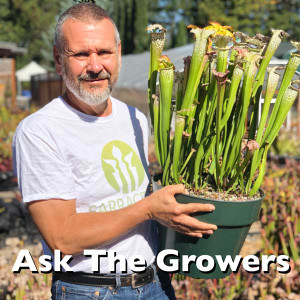February 23, 2023
Q/A #40 - Flytrap Blooming in Winter(!)
QUESTION:
I received my Venus Flytrap back in November. I’ve been loving growing it, and it’s been fun watching the traps grow and open. I recently noticed that my plant is growing a flower bud. I’ve been researching what exactly I should do about this but haven’t found convincing information. I’m hoping that you may be able to offer some tips on how to continue the healthy growth of my plant despite the scary things I’ve read about the flowering of Venus Flytraps.
(
Submitted in February 2021.)
RESPONSE BY JEFF DALLAS:
First, I'm assuming you're growing your flytrap indoors since it's blooming in winter. When grown outdoors in a natural setting, flytraps bloom in June through July. In the care instructions included with your plant and on our website, we repeatedly say to grow Venus flytraps outdoors since they are US-native hardy perennials.
Since you didn't mention the type of lighting you're giving your plant, I'm going to recommend cutting the flowers off. The "scary things" you probably read about Venus flytraps dying after they flower is because people grow them in poor lighting, and the plant can't sustain both flower and leaf growth. Flytraps get their energy from sunlight. When grown outside in full sun and allowed to experience the seasons, they can bloom in summer without any problem. Please read the care information we have on our website. We also have a digital download that explains how to grow a Venus flytrap that will live for years rather than just a few months.
•
Venus Flytrap Care Guide
•
The Ultimate Carnivorous Plant Guide for Beginners
Since you have your plant indoors now, leave it in a windowsill until spring. It will die if you move it outdoors while in active growth and temperatures are below freezing. When you're past the risk of frost, move the plant outside to a sunny location and continue caring for the plant outside.
With that said, there are times when we recommend placing a flytrap on a windowsill, but that's for folks in very cold climates, USDA zone 6 and colder, as a way to keep the plant in dormancy without the risk of freeze drying. If you need help with winter care and keeping your plant dormant, write back to us. We also outline winter care in the digital download.
• The original question and response have been edited for publication.
• With a database of thousands of questions, we will post a Q&A every few days or so.
• To search for similar posts, click on a hashtag below or use the site's search function.
• To submit a carnivorous plant question, visit Ask the Growers.

